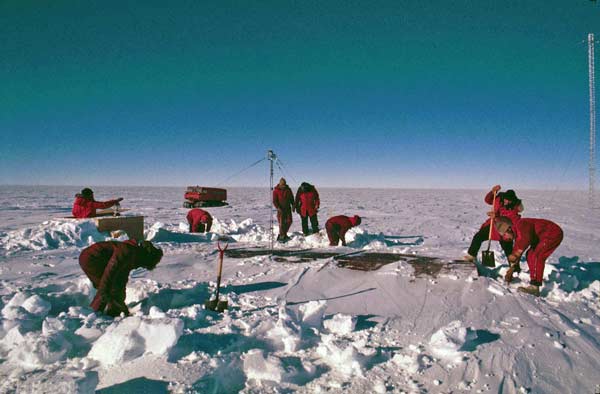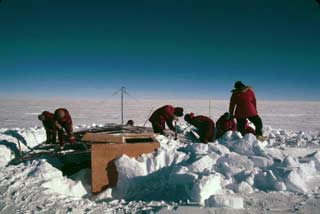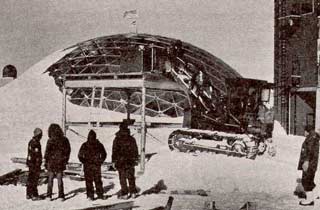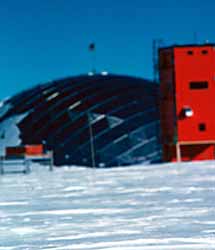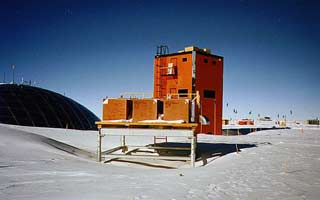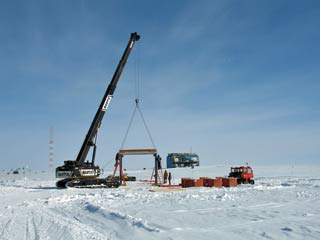It's...cosmic, man
|
One of the major science projects in 1976-77 was relocating Dr. Martin Pomerantz's Bartol cosmic ray project. This had been deferred from the 1975-76 summer due to lack of cargo flights because of the Dome C aircraft crashes. The first phase was to dig out and occupy the old cosray lab. This was a separate building at Old Pole on the other side of the skiway. Marty wanted to collect a few days worth of baseline data here before the new detectors were installed. Above, we're just starting to dig out the hut; the roof is barely visible. Here's the story of what we're digging out before it got buried (yes, that is our black D8 in the old photo). This experiment was first installed here in 1963-64; previously the hut was the original McM cosray lab located close to where the nuclear plant would later be built. Too close.
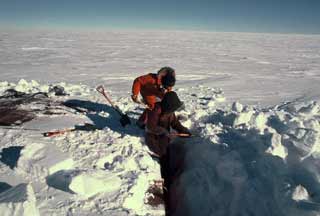 There wasn't really much that heavy equipment could do here without risk of damaging the building, so this was basically lots of hard work-- for GFA's, Stu and Les, and others including me--yes, my job description included D1 operation. You may notice some bits of dark screening material in these two photos. This is copper screen shielding. Marty Pomerantz broke his finger while installing this material in 1963-64 and had to be medevaced; I learned this much later from his book [gulp, there are some cheaper used copies out there; no, you can't have mine]. 
These first four photos are courtesy of Les Rohde. The next step was to install the detectors...but no one knew where the platform was. Stu knew what it looked like from the drawings, and he stumbled upon it while wandering through the cargo yard at McMurdo. At right, we are setting the first of the cosmic ray detectors on the platform behind Skylab (yes, Marty Pomerantz showed up and stayed around to make sure everything was running properly). The detector tubes are housed in insulated and heated boxes with lead shielding-- these were the world's most sensitive cosray detectors at the time. 99.9% of the data was collected by Stu on mag tape to get shipped out at the end of the winter, but he watched for significant stuff.
Photo credits...the first four pictures are courtesy of Les Rohde....the black-and-white photo of the platform erection is an NSF photo from the Antarctic Journal, Vol. XII #4, October 1977, p. 199...the next 1976-77 photo is from Tadashi Yogi...and the 1997 picture is by Leonard Shulman, it is from the University of Delaware/Bartol site. The 2009-10 photo is from Ethan Good. |
